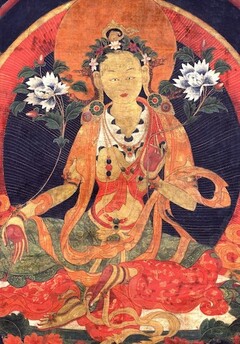Tārā Series
English (55) | Deutsch (10) | Español (14) | Français (23) | Português (2) | Italiano (2) | Nederlands (1) | 中文 (4) | བོད་ཡིག (54)
A series of texts related to the noble saviouress Tārā (sgrol ma):
Introduction
by
Stefan Mang
Advice
History
Lineage Prayers
by
Jigme Lingpa
Praise
by
Candragomin
Prayers
by
Ratna Lingpa
by
Sera Khandro
by
Sera Khandro
Sādhanas
by
Jigme Lingpa
Sang Offering
by
Karma Chakme
Seven-Branch
by
Lakṣmī
